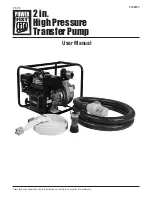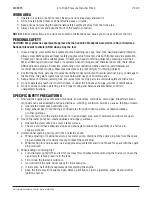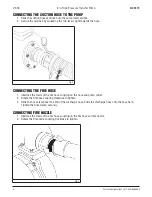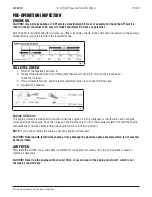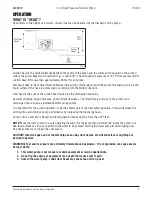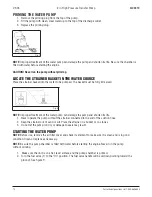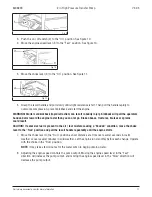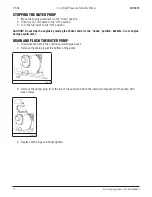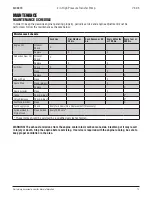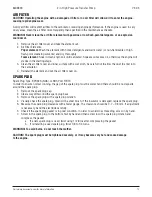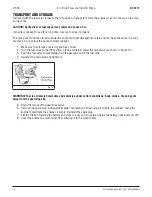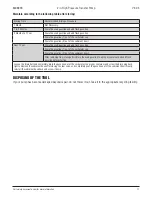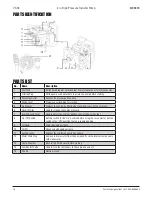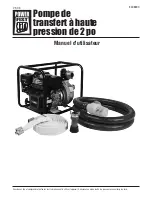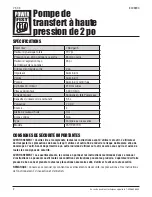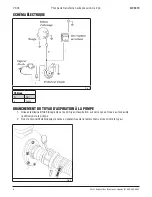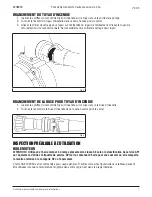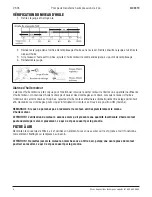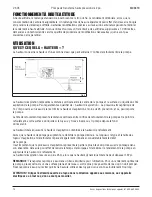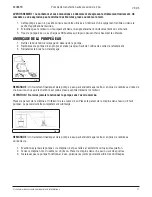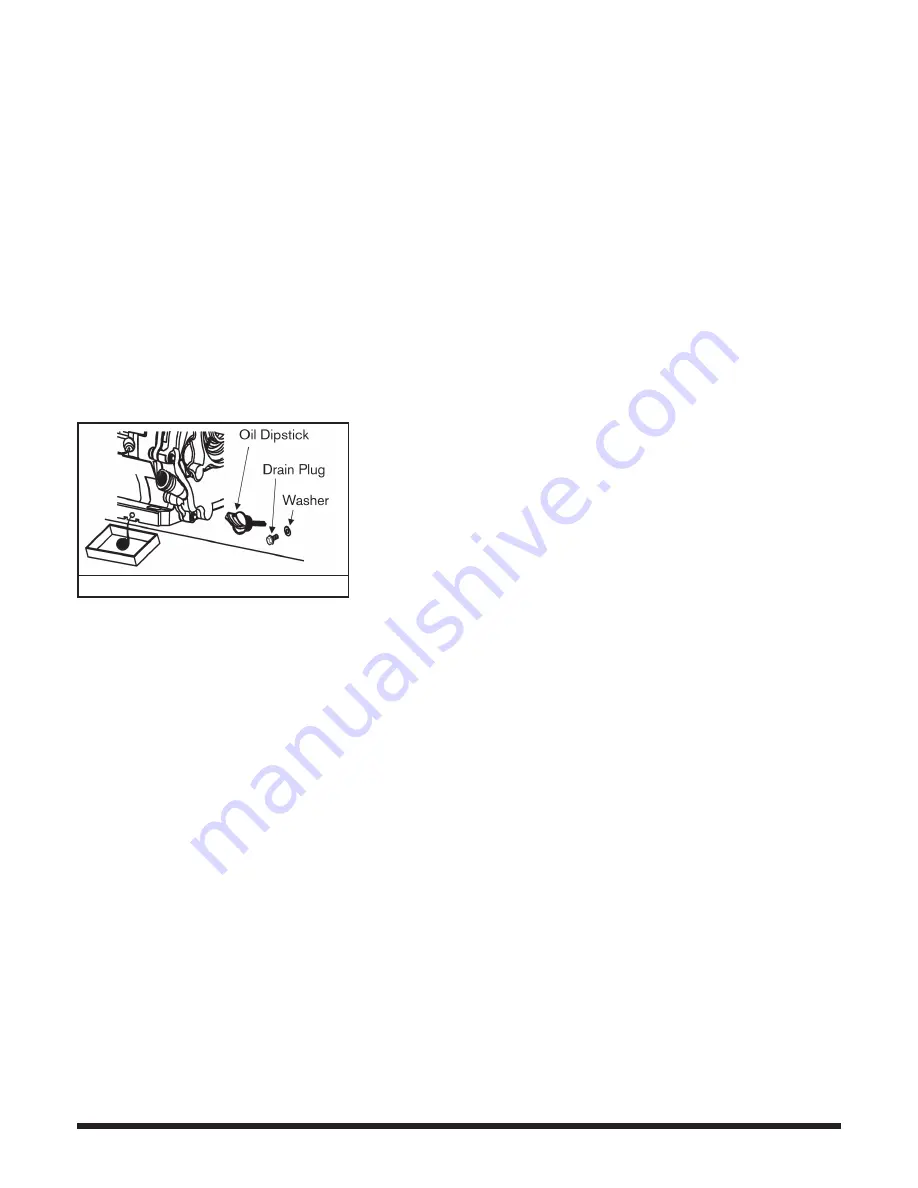
2 in. High Pressure Transfer Pump
14
For technical questions call 1-800-665-8685
8408890
V 3.03
LUBRICATION
High-quality detergent engine oils are acceptable if the American Petroleum Institute (API) performance rating is
SF, SG, SH, SJ or higher. Always check the API service label on the oil container for the performance rating. Do not
use special additives. SAE 10W-30 is recommended for general use
.
Replacement Of Engine Oil
1. Drain the engine oil rapidly and completely when the engine is hot.
CAUTION! Remember that hot surfaces could cause burns.
2. Screw off the oil filler cap and drain plug to drain the engine oil thoroughly. Reinstall the drain plug and
screw in securely when oil has completely drained.
3. Fill the engine with specified oil up to the upper level mark.
4. Reinstall the oil filler cap.
NOTE:
Do not dump oil containers or discarded engine oil into garbage boxes or onto the ground. For
environmental protection, we suggest you take in discarded engine oil in a closed container to a local
recycling station.
Fig. 14
EXHAUST CONTROL SYSTEM
When the engine is running, carbon monoxide, oxide of nitrogen and hydrocarbon will be produced and in certain
conditions, oxide of nitrogen and hydrocarbon will react chemically with each other to make a carbon monoxide
smoke which is toxic.
1. Maintain the engine periodically in accordance with the maintenance schedule in the manual. The
maintenance schedule is designed for normal use in normal conditions. If used under heavy load, dusty or
wet conditions or in high temperatures, service of the engine should be done more frequently.
2. Problems affecting exhaust emissions:
a. Difficult starting or difficult stopping
b. Unstable idle speed
c. Black exhaust or high fuel consumption
d. Poor ignition sparks or backfire
e. Advanced ignition

